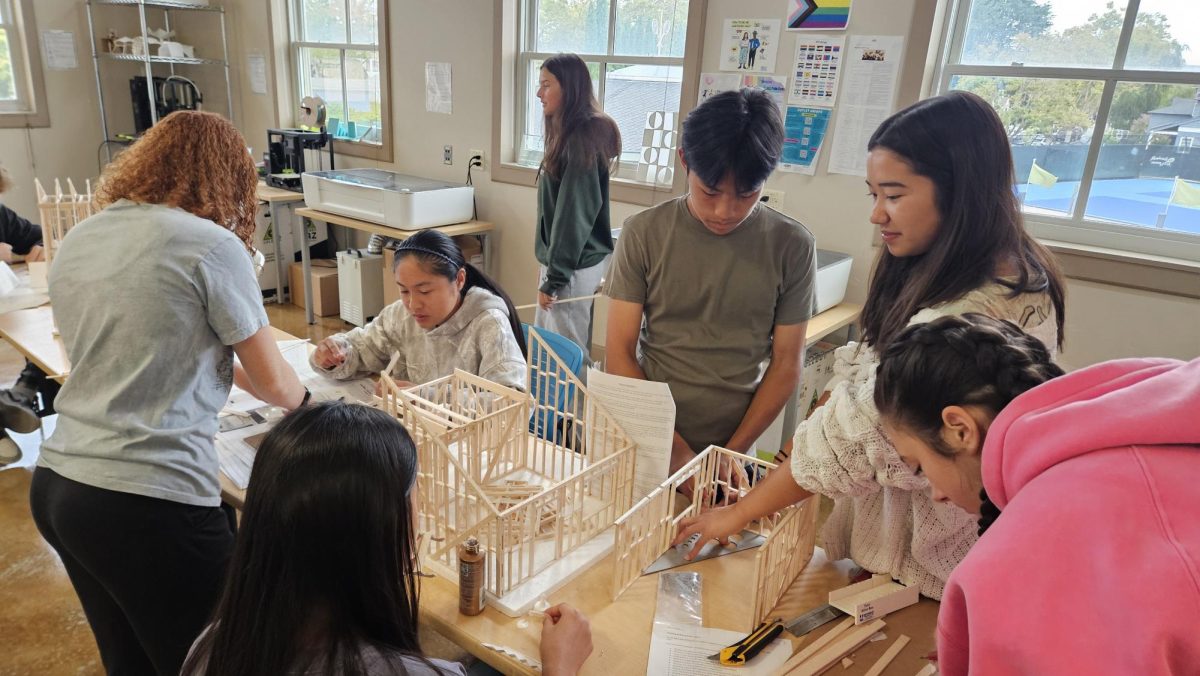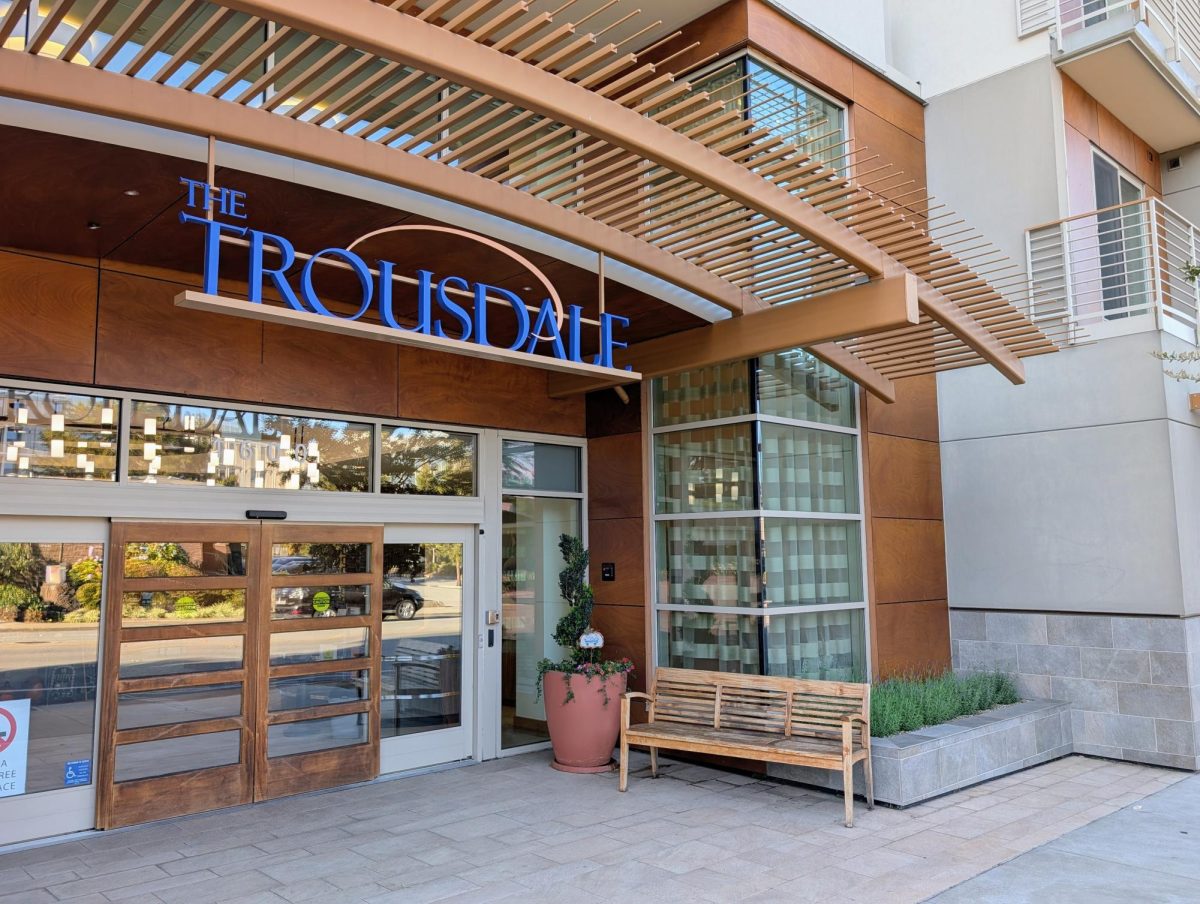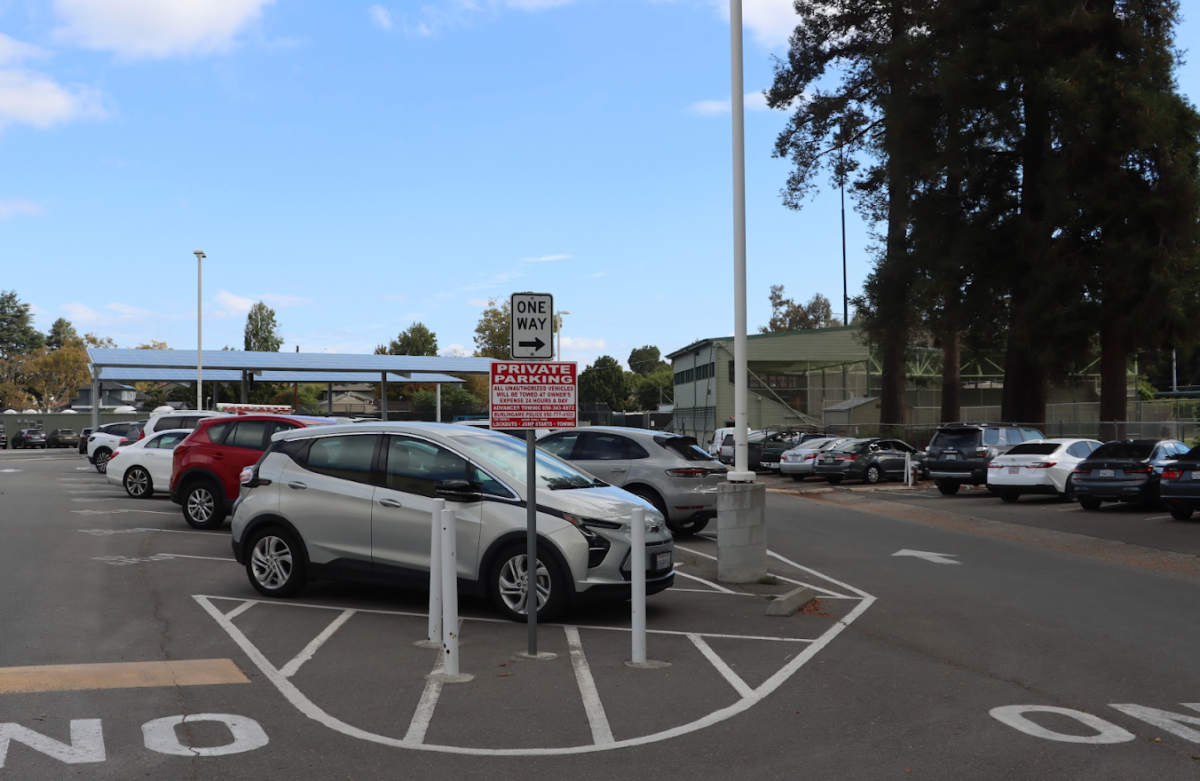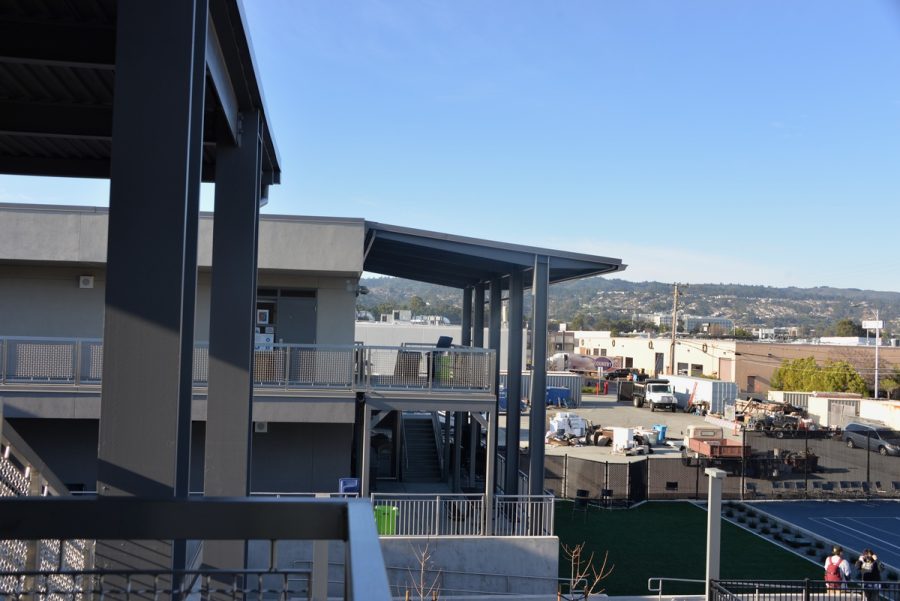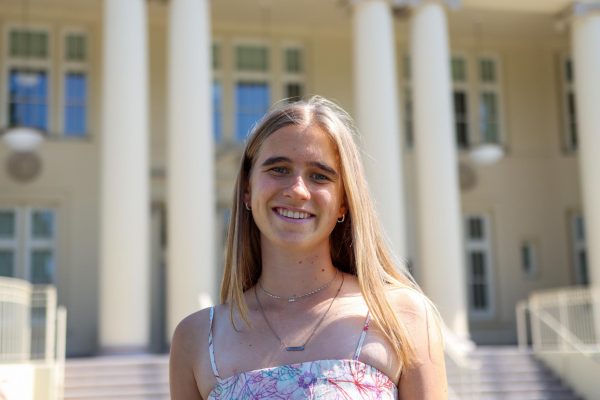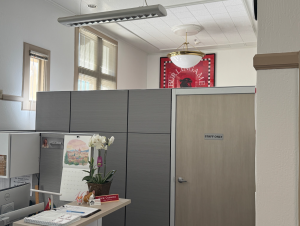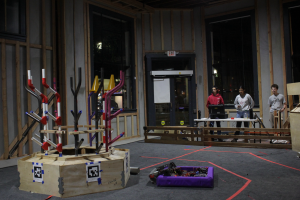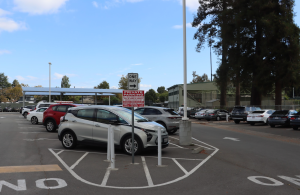Peninsula High School: “a Lego-built school”
The new Peninsula campus sits near the Hyatt Regency San Francisco Airport in Burlingame. The location aims to offer a more accessible campus for students.
February 23, 2022
When Elaine Llaguno started as a guidance counselor at Peninsula in 2010, the future looked bright. The Crestmoor property in San Bruno was falling into disrepair, but the Measure O bond proposition had gained overwhelming support during the November election, promising $186 million to upgrade facilities and technology in the SMUHSD. A portion of this money, Llaguno knew, would go toward a new and updated facility for Peninsula.
“This was their chance to show us that like: we want to give you everything, whatever it is that you want,” Llaguno said. “Let’s do this now because this building is going to be around forever, the school is going to be around forever. And this was an opportunity for the district to really show us how they value our school.”
But for years, nothing happened. At the same time, the comprehensive schools were eating into the Measure O funds, which had passed by a 23-point margin. Modernizing a brick building at San Mateo High School cost more than $7 million. At Burlingame, $9,855,143 was spent on the two-story F-Building that now holds four special education and elective classes. At Hillsdale High School, almost $30 million funded a new building for science classes.
“In the midst of all of that, you all got brand new football fields, theaters, upgraded solar panels and more, and so I felt like we got left with the chump change of that measure that all of the taxpayers passed, and we ended up with pretty much like a Lego-built school,” Llaguno said.
While the comprehensive schools were updated and renovated, the promise of the state-of-the-art site to come placated the Peninsula community. Meanwhile, the Crestmoor site had fallen into disrepair. According to English teacher Caroline Wisecarver, the building had not been updated since the 1980s. Rodents and bugs were found in classrooms while black tar dripped from ceilings. Staff laptops and technology were obsolete, and temperatures in the classroom could fluctuate wildly, once reaching upward of 90 degrees.
Llaguno noted that during her time at Peninsula, she has watched the district implement initiative after initiative. But those initiatives always felt exclusive to the six comprehensive schools, like every investment should have included this asterisk: Except for Peninsula.
That’s why “this is not new,” Wisecarver said — for years, Peninsula has been snubbed while the rest of the schools were pampered, the staff agreed.
“At every Board meeting, I was super excited because I was fresh in my career, right?” Llaguno said. “Like ‘Oh my gosh, I’m gonna be moving into this brand new school. How lucky am I to be starting my career in a school that’s going to be moving.’ And years went by and years went by and things are just still unsettled. They couldn’t find property. It just felt like they were giving us the runaround.”
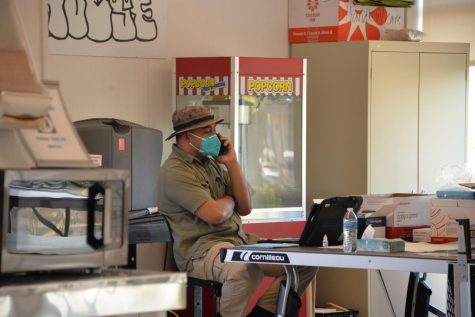
In 2018, the SMUHSD finally found a new building that seemed suitable for the Peninsula community. It was exactly one acre, located near the San Francisco International airport to be more convenient for the students that Peninsula serves. It would be purchased for $8 million, a fraction of what the district plans to sell the 20-acre Crestmoor property for: $85 million.
Peninsula staff and students waited 10 years for a new school. But, the district rushed the move, despite objections from teachers, Wisecarver said, and forced students to enter the facility before construction was complete.
That was only the start. In their first year at the new school, teachers and students cited thin walls, cramped office space, tight classrooms, undrinkable water and malfunctioning technology that went unfixed.
Despite all this, students set foot on campus for the first time in March of 2021. At the time, they were given school water bottles “as a home-warming gift,” Principal Ron Campana said. But those water bottles would prove a waste of money when the students didn’t have access to clean water on campus.
On Apr. 16, 2021, Wisecarver emailed the vice principal to inform him that brown water was dripping out of faucets and fountains. However, it wasn’t until mid-May — with just two weeks of school left — that the district offered water filter stations to Peninsula. Failing to provide clean water during meal times is a violation of federal law — specifically, the Healthy Hunger-Free Kids Act, which Congress enacted in 2010.
Although water filter stations were eventually provided, the district did not offer a permanent solution to the problem or attempt to improve the cleanliness of the water. When Wisecarver pestered the district again — this time on behalf of the teachers’ union — and CC’ed Dr. Skelly, the district sent investigators to perform water testing.
“On a good part, it was good that we are a small school, and we can just rely on water bottles,” said Natalie Leaver, a senior at Peninsula. “But then again, if that happened to another school, I feel like it would be solved way quicker, like over a weekend.”
In the long run, the school’s biggest challenge is the size of the campus. While current daily attendance at Peninsula hovers around 105 students, that number could easily grow. Peninsula’s total population is about 195 students, and approximately 35 of those participate in the Bridge program for English learners at the San Mateo Adult School and aren’t regularly on campus, while around 15 students do some form of online learning and attendance rates sit at about 65%, Campana said.
Peninsula’s starting population is also unusually low this year. AB 104, signed by Governor Gavin Newsom last July, exempted students from local graduation requirements and only required that students meet the state quota of 130 credits. Most of Peninsula’s students come to the continuation school because they are behind on credits needed for graduation; AB 104 allowed many of them to graduate without an extra stop at Peninsula.
Because AB 104 won’t apply this year and the school is making an effort to reach students with inconsistent attendance, the Peninsula population could be set to increase, and this poses a legal and practical problem for the school.
Legally, the school can only house 218 students on one acre, Campana said, and the population could quickly swell.

But regardless of the number of students at Peninsula, structural issues with the construction of the school will remain. Classrooms fit only 28 students, leaving the high schoolers “packed in like sardines,” Llaguno said.
Worse, Peninsula does not have a communal space where all 105 students and 25 staff can gather — such as an auditorium, gym or field. Even their multi-purpose room can fit only 80 students.
“We have nowhere we can put our whole school community,” Llaguno said. “We need space. This school, I think, would be too small even for an elementary school,” Llaguno said.







